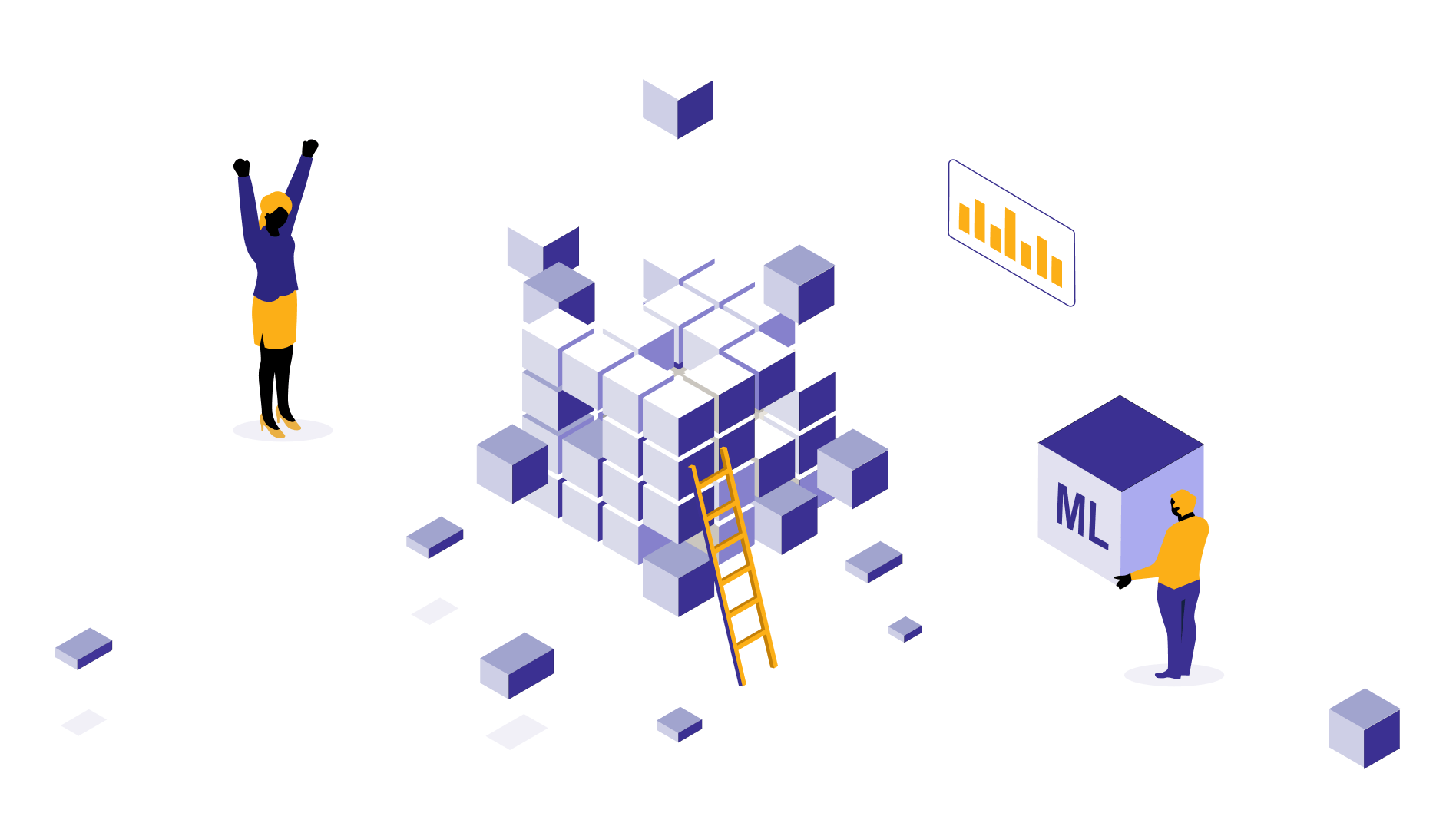Business intelligence for retail success
Top retail companies use their humongous amount of data to increase their sales, reduce costs, and solve major business problems. And you could do that too. Read the article to see what modern business intelligence has to offer to the retail sector.

Suresh
July 2, 2024 |
5 mins

How business intelligence transformed the retail industry?
Retail companies have too many concerns to face on their plate. From coping with changing consumer demands to tackling inventory and supply chain issues to thriving sustainably. And then there is the rise of eCommerce. The list goes on. However, some retailers have successfully unlocked the mystery to these puzzles with the help of data. With tools like retail demand forecasting, they stay up-to-date on what happened in the past, connect the dots, and plan the future. One good example would be Walmart that collects and processes and draws fresh insights from petabytes of data. This data is usually from sources like customer data, marketing campaigns, inventory and logistics, vendor management, and more. With the collected data, they not only streamline their operations but also predict the requirements to ensure that they stock up just what’s needed.
There are many companies like Walmart that leverage business intelligence for retail success, responding proactively to dynamic market changes and making swift decisions.
BI Solutions for retail industry
BI use cases are becoming more prevalent in the retail sector. Some of the most commonly used business intelligence solutions by the retail industry are,
Customer analytics
Retail businesses are purely driven by customer needs. So understanding customers is the foundation to boost sales and deliver what customers expect. With customer analytics, you could segment users and run tailor-made marketing and sales campaigns. You could go a bit deeper, use customer behavior data to have more profound segments. Example: segmenting and targeting customers who are interested in kids' toys and accessories and offering them free trial invites.
Analytics also makes it easier to analyze customer lifetime value. One could conduct a descriptive analysis on the profitability of each customer segment, raising the following questions.
Where these customers come from
What age group they fall under
How frequently they shop
Brands and categories they buy frequently
Feedback shared
This makes it easier to focus more on segments that yield maximum results, while increasing customer satisfaction and retention.
Inventory management
Product demand changes over time and changes from one region to another. It can take a while for retailers to adjust to these changing trends and demands and not have over-stocking or under-stocking moments. However, it is possible to get hold of the swaying pattern, maintain ideal stock levels, and serve customers when they need. Retail and eCommerce giants like Amazon use business intelligence to predict the above factors to meet customer demands, both during peak and mid seasons.
It’s also possible to track aging stocks using business intelligence and minimize wastage. Many grocery stores like Walmart already have this smart inventory system, where both the warehouse and store manager get visibility into stock levels, quantities, use-by date, demand, and more. This, in return, has a positive impact on effective space utilization as goods move in and out on time.
Cost optimization
Ever noticed how large grocery stores change the pricing of fresh items every day? That’s dynamic pricing, and it works for almost every retail sale category. It allows retailers to increase or reduce pricing depending on the demand, stock levels, freshness, and many other factors. Other than making the most profits, they could also reduce shrinkage and waste, leading to stable vendor relationships.
But cost optimization is not simple, considering the number of products, racks, brands, and thousands of factors that decide sales. That’s where business intelligence can help, throwing light into what’s necessary to validate.
With real-time insights into fast and slow-moving products, you could set the right and reasonable price that consumers buy.
Marketing performance
Marketing teams juggle multiple channels, campaigns, and lead generation responsibilities. In a retail landscape, this could range from offline promotions to social media content creation to hyper-personalized offers. All of this requires business intelligence to see what’s working and what doesn’t.
Many retailers already run targeted campaigns on selected channels to get the maximum ROI. For example, segmenting young women who are into makeup and skincare to run a campaign on makeup products. One could also run A/B testing to drill down into the user preferences.
Other than measuring the nuances of the campaign, marketers could also uncover the latest trends and align them with product offers. There are social media channels and forums to gather information on the latest trends. Business intelligence could help uncover this data to create content and optimize ads.
Forecasting
Retail forecasting is a powerful tool that can streamline operations like inventory planning, employee shift and productivity, or anything else. It’s all about understanding what powers the buyer's motivation and planning your store arrangement based on it. If the forecasting reports show a surge in winter products in a particular region, the shops place stock cardigans, scarves and sweaters in the storefront, while increasing the inventory levels. Selling warm clothes for winter might look like a basic prediction. Please be aware that these forecasts can be in depth too, foreshadowing product sales based on color, sizes, fabric choices, brands, patterns, and more. Similarly, you could also use this information to tune your ad campaigns and improve audience engagement.
Either way, you get useful insights that help you sell more without running out of stocks.
Learn more: What is data storytelling
Tools that you can consider for business intelligence
The following are some of the most common visualization and business intelligence tools used by the retail industry.
Microsoft Power BI
Power BI belongs to Microsoft, is a good choice for many well-grown retailers with mature data architecture. It’s more than an analytics tool, helping with data ingestion from various sources, transformation, and visualization. You could use its drag-and-drop interface to collect data, employ math functions, and create instant reports and dashboards. The platform is abundant with visualization elements like graphs, pie charts, scatter plots, and other similar items. You could simply choose, incorporate branding elements and colors, and share in a one-click or download for offline use.
Retail zonal and sales managers could use this to manage sales and feedback analysis and share monthly or daily reports on-the-go.
Retail analysts could set up self-service business intelligence best practices, use natural language queries to find answers to their queries. How’s the sales like in the southern zone, how much has the sales improved in the last three months, and the like...
Tableau
Tableau is another potential tool like Power BI, commonly used by retail and eCommerce agencies to address complex visualization problems. It comes with an easy-to-use interface with drag-and-drop options. While Power BI comes handy for Microsoft users, Tableau is more versatile compared to Power BI.
It’s simpler to create interactive dashboards and visuals with Tableau, suitable for the complex analytics requirements of retail businesses.
It’s also best suited for sending daily, weekly, and monthly reports tailor-made for each professional. You could also enable alerts based on predefined conditions and clauses. Being available for mobile, desktop, and tablet separately, Tableau is one of the affordable and easy-to-setup visualization tools.
Qlik Sense
Qlik Sense is a data platform for analytics, data integration, and AI. It comes with retail analytics curated specifically to meet the visualization needs of the retail industry. From demand prediction to fulfillment to logistics, this helps you track all the key points and turn complex analytics into actionable, store-level metrics useful for managers. Used by many popular mortar and brick stores with 500+ branches, Qlik helps retailers enjoy real-time reporting and get frequent snapshots of store performance.
Learn more: Importance of self-service analytics
Conclusion
After facing many unprecedented challenges, the retail industry has learned now the importance of business intelligence. Digital transformation, modernized data architecture, and intelligent tools have all made the job easier to get started without bottlenecks. More than half of the decisions made are data-driven, mainly because of the dedicated data teams, insightful reports, and timely data adoption.
Aiming to achieve the same for your business and tackle modern retail problems like a pro? Then, you start with business intelligence and start measuring analytics that matter to the business growth in real-time. While most BI tools come with plug-and-play nature, it can be tricky to get the data consolidation and analytics right. Our team of BI and visualization experts are ready to help you figure out what your business needs to track, how, and how frequently. Send us your questions and queries about retail business intelligence and gear up for your extensive consultation. To help you decide, we have listed some cool dashboards our team has built.

by Suresh
Suresh, the data architect at datakulture, is our senior solution architect and data engineering lead, who brings over 9 years of deep expertise in designing and delivering data warehouse and engineering solutions. He is also a Certified Fabric Analytics Engineer Associate, who plays a major role in making us one of the early adopters of Fabric. He writes in words whatever he delivers with precision to his clients, consistently voicing out trends and recent happenings in the data engineering sector.



